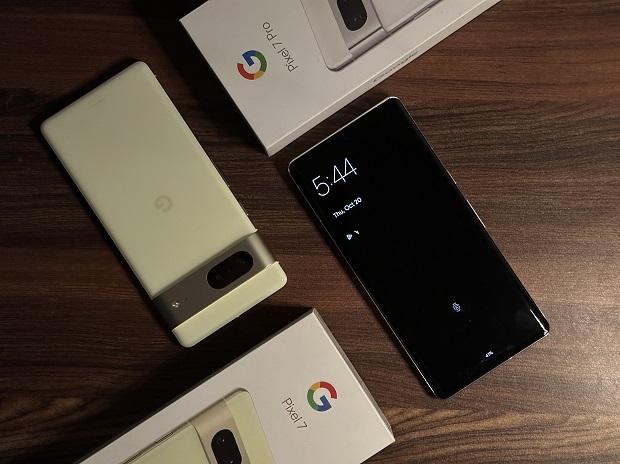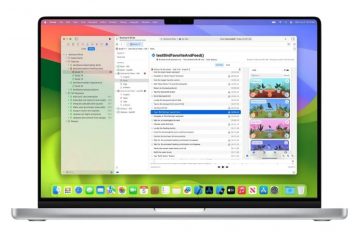From computational photography to Material Design interface, the Pixel series smartphones have Google’s software prowess going for it since inception. The software giant has moved to its own chip and is catching up fast with the industry’s best in terms of other pieces of smartphone hardware such as camera sensors and display. However, Google’s software-related enhancements continue to define the Pixel experience.
Take for example the newly launched Pixel 7 and Pixel 7 Pro. The smartphones have AMOLED screens of adaptive refresh rate, multi-camera systems on the back, under-screen fingerprint sensors, aluminium enclosures, glossy glass back panels, and Android 13 operating system. The Pixel 7 series may seem ordinary Android smartphones on paper, but these are full of surprises in real life experience.
In daily usage, Pixel exclusive features such as voice typing with Google Assistant go big in improving the user experience. The Google Assistant, besides enabling voice typing, suggests and searches for emojis using voice input to help make texting experience fun. Voice typing is available on other smartphones too, but Google’s iteration is polished and works as intended. Lack of support for Hindi and other Indian regional languages, however, is a dampener.
Another cool software feature is the ‘transcribe voice messages’, which shows transcription of voice messages so you can continue with the conversations in scenarios, such as meeting hours, where you cannot listen to voice messages. However, it is limited to Google’s Messages app and use of this app is not prevalent in the country. Therefore, the feature is a novelty of limited benefit at present.
Imaging has been the defining trait of the Pixel smartphones, and Pixel 7 series is no different. The Pixel 7 has a dual-camera system on the back, featuring a 50-megapixel primary sensor and a 12MP ultra-wide-angle sensor. On the front, there is a 10.8MP ultra-wide-angle sensor. The Pro model has a similar set-up, but carries an additional 48MP telephoto lens on the rear for optical zoom capabilities. Besides, the phone’s ultra-wide-angle sensor has autofocus, enabling close-up shots from up to 3cm distance.
Details aside, the primary sensor of both the smartphones works well irrespective of lighting conditions. It takes detailed shots with natural colours and a wide dynamic range. Besides, the pixel-rich sensor creates natural shallow depth-of-field for DSLR-like output. The Pixel 7 lacks a dedicated telephoto lens, but allows for digital zoom (up to 8x) powered by Google’s computational photography. 2x zoom shots taken in good light conditions look good, but digital zoom limitations come to notice if you go beyond. The Pixel 7 Pro, with dedicated telephoto lens, does better and goes up to 10x zoom with no deterioration in quality – at least in good light conditions.
Coming to the ultra-wide-angle camera, the sensor in the Pixel 7 is good but has a narrow field-of-view (FoV) compared to other smartphones in the same segment.
It lacks auto-focus, therefore, cannot be used for macro shots. The Pixel 7 Pro does not have these limitations. It has a wide FoV and supports autofocus for close-up shots.
Besides regulars, both the Pixel 7 and Pixel 7 Pro come loaded with exclusive camera features for differentiating imaging experience. Google has baked in the camera interface two new motion pre-sets named ‘Long Exposure’ and ‘Action Pan’ for artistic shots. Long Exposure adds a blur to moving subject in the scene, creating a smooth trail of the subject while keeping the background static. Action Pan is right opposite; it focuses on moving subject and adds blur to the background. Currently in beta, these work fine in good light conditions but struggle in low-light.
As for videos, the Pixel 7 series is capable of recording 4K resolution videos at 60fps from all available camera sensors. Lifting the video experience in both the smartphones is the addition of 10-bit HDR videos available in up to 4K resolution at 30fps settings. Besides, there is cinematic mode, which seems work-in-progress in its current form — limited to 1080p at 24fps and requires good lighting to work.
Rounding up the package is the swift performance and modest on-battery time. Both the phones perform well with both regular and demanding tasks. Gaming is a mixed experience with performance throttle and rise in thermals noticeable after extended sessions, especially in graphics-intensive games such as Genshin Impact. Nevertheless, the overall experience on the Pixel 7 series is smooth. The interface is clean and there is no bloatware, except Google’s own. Navigating the interface is snappy and transitions look smooth.
Coming to the on-battery time, the phones keep going for about a day on mixed usage with screen set to adaptive refresh rate and always-on display enabled. Camera usage drains the battery faster, but other power-intensive tasks such as video and music streaming, photos editing, and games have no overpowering impact on the battery time.
The Pixel 7 and Pixel 7 Pro make a compelling buy for Android enthusiasts, but there are caveats. Both the smartphones come with 128GB on-board storage. There are no other storage variants available in India, and both the phones lack external storage options. That said, these otherwise stellar smartphones are set back by limited storage options. Google Pixel 7 series: Specifications
| Parameter | Pixel 7 | Pixel 7 Pro |
|---|---|---|
| Display | 6.3-inch AMOLED, 90Hz | 6.7-inch LTPO AMOLED, 120Hz |
| Audio | Stereo speakers | Stereo speakers |
| Chip | Google Tenson G2 | Google Tenson G2 |
| OS | Android 13 | Android 13 |
| RAM | 8GB | 12GB |
| Storage | 128GB | 128GB |
| Rear camera | 50MP OIS + 12MP | 50MP OIS + 12MP AF + 48MP OIS |
| Front camera | 10.8MP | 10.8MP |
| Battery | 4355 mAh | 5000 mAh |
| Protection | Gorilla Glass Victus and IP68 | Gorilla Glass Victus and IP68 |
| Price | Rs 59,999 | Rs 84,999 |
Verdict
The Pixel 7 and Pixel 7 Pro are among the best Android smartphones to experience Google’s software prowess. These smartphones seem ordinary on paper, but Google’s experience-oriented software-related enhancements put them a notch above other premium smartphones. Therefore, do not judge the Pixel 7 series on the specifications sheet alone.
Note:- (Not all news on the site expresses the point of view of the site, but we transmit this news automatically and translate it through programmatic technology on the site and not from a human editor. The content is auto-generated from a syndicated feed.))




аккаунт для рекламы безопасная сделка аккаунтов
гарантия при продаже аккаунтов marketplace-akkauntov-top.ru/
маркетплейс аккаунтов соцсетей https://ploshadka-prodazha-akkauntov.ru/
маркетплейс аккаунтов гарантия при продаже аккаунтов
магазин аккаунтов социальных сетей профиль с подписчиками
Account Trading Service Sell Account